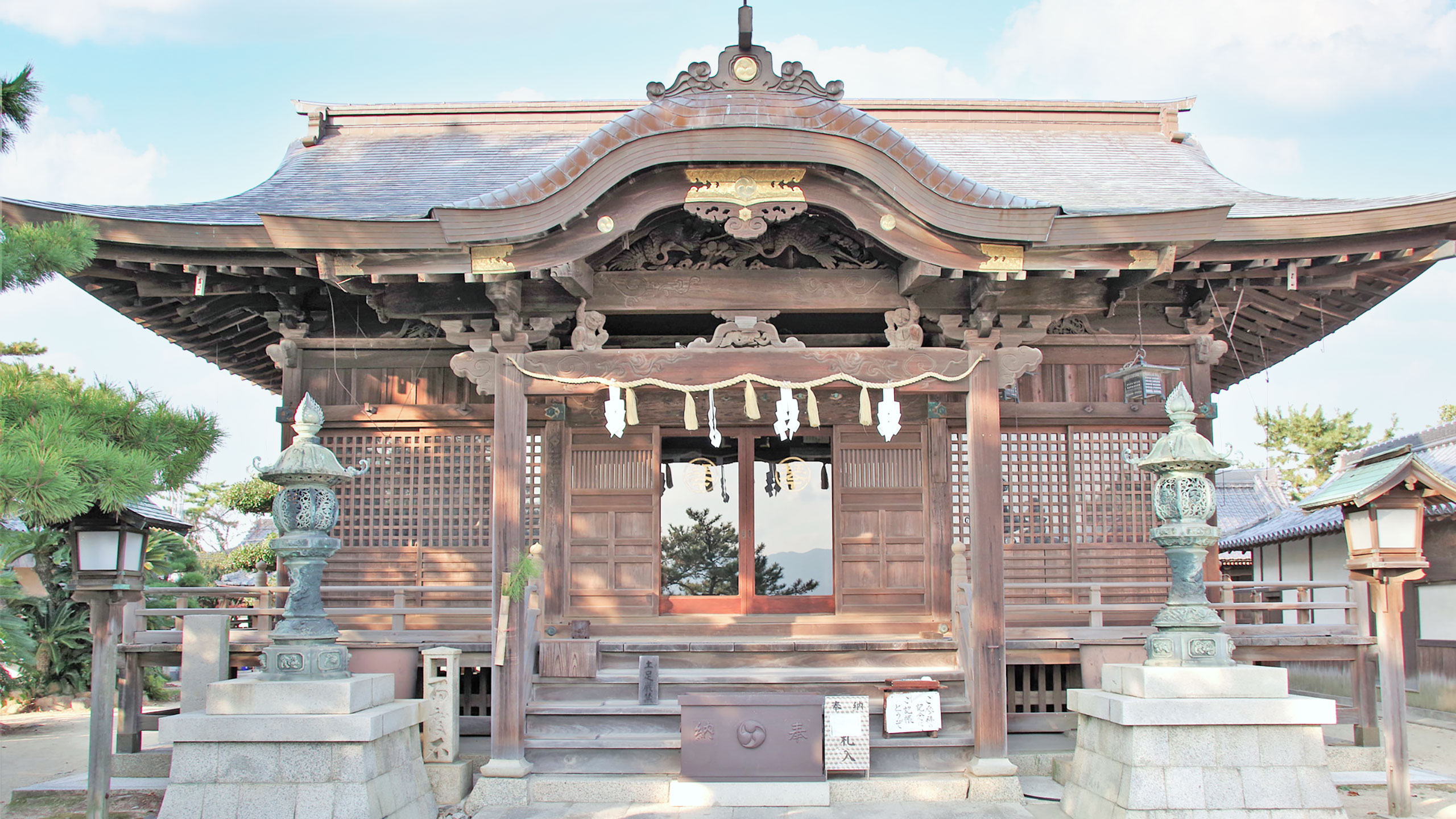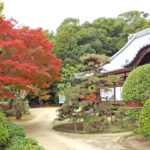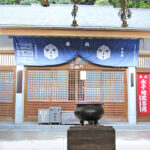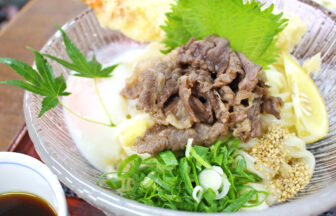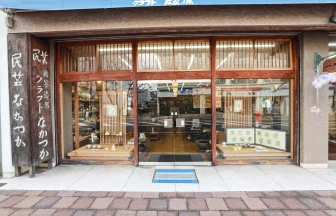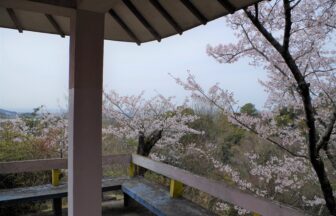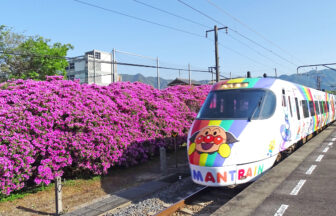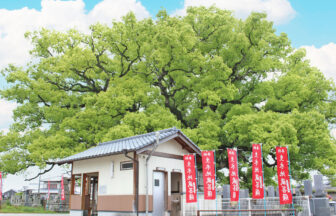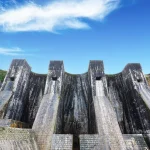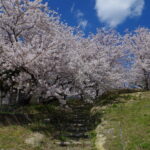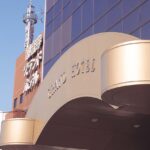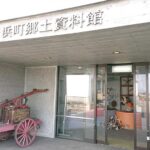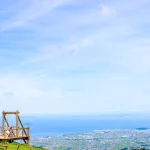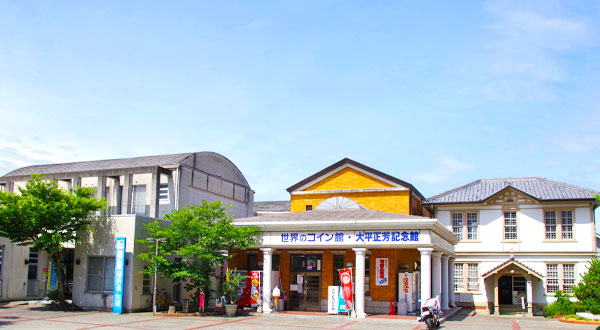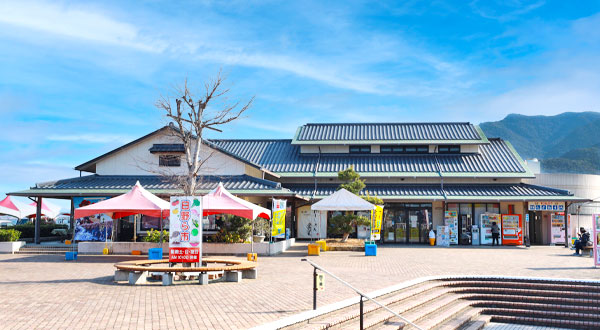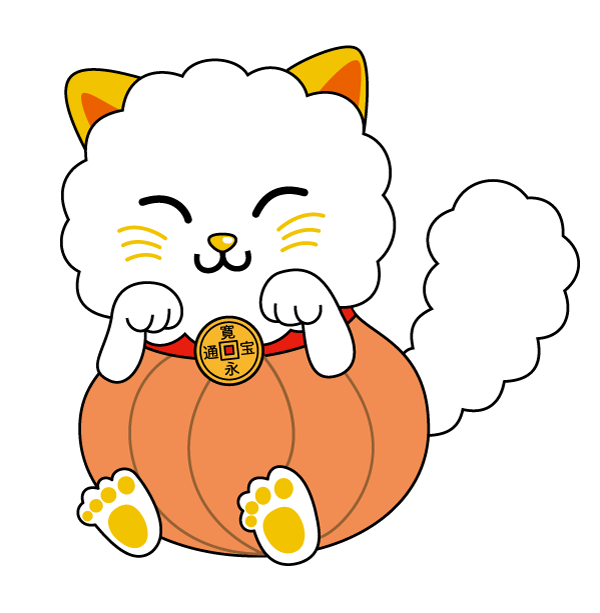From the Otorii gate at the entrance of Kotodama Park, 381 stone steps lead up to the main shrine of Kotodama Hachimangu Shrine.
Formerly the 68th of the 88 Shikoku Buddhist Temples, it is now the 23rd temple of the New Shikoku Mandala Sacred Sites and the 14th temple of the Sanuki Jugo Shrine.
Along the way, there remains a wooden torii gate dedicated by Minamoto no Yoshitsune to pray for victory in the Battle of Yashima, as well as a signpost by Yuben Shinnen, who is also known as the father of the pilgrimage route.
The Seto Inland Sea and the city of Kannonji can be seen from the temple grounds, and the music played on the koto (Japanese harp), which is associated with the origin of Kotohiki Hachiman Shrine, soothes the hearts of visitors.
The shrine is also known as the place where Minamoto no Yoshitsune prayed for victory in the Battle of Genpei, and even today, historical facts and sites remain such as the prayer texts of Yoshitsune’s visit to the shrine and the dedication of sacred horses. This is the reason why the shrine is also called the god of victory, and many people visit the shrine to pray for students preparing for entrance examinations and for victory.
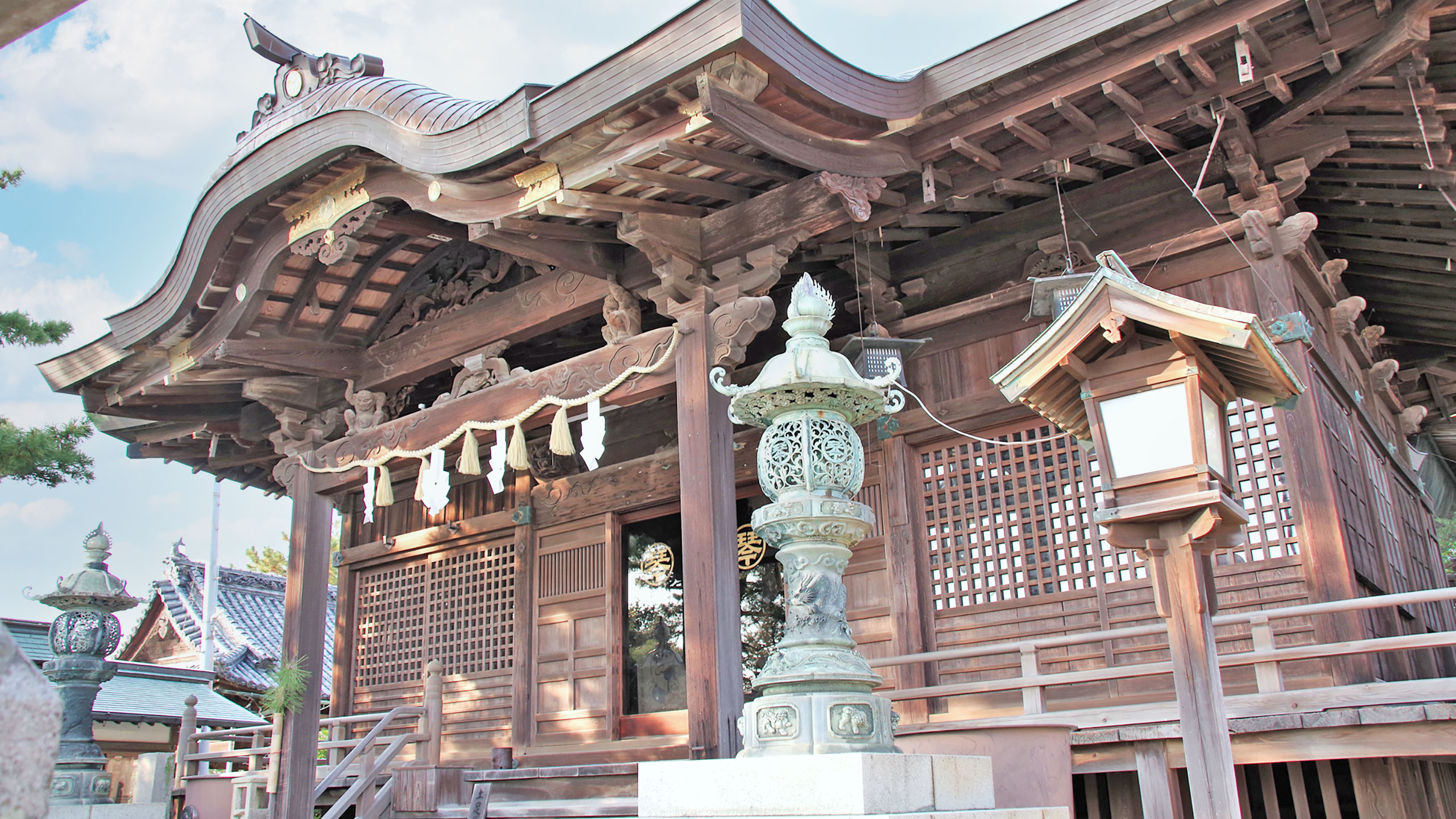
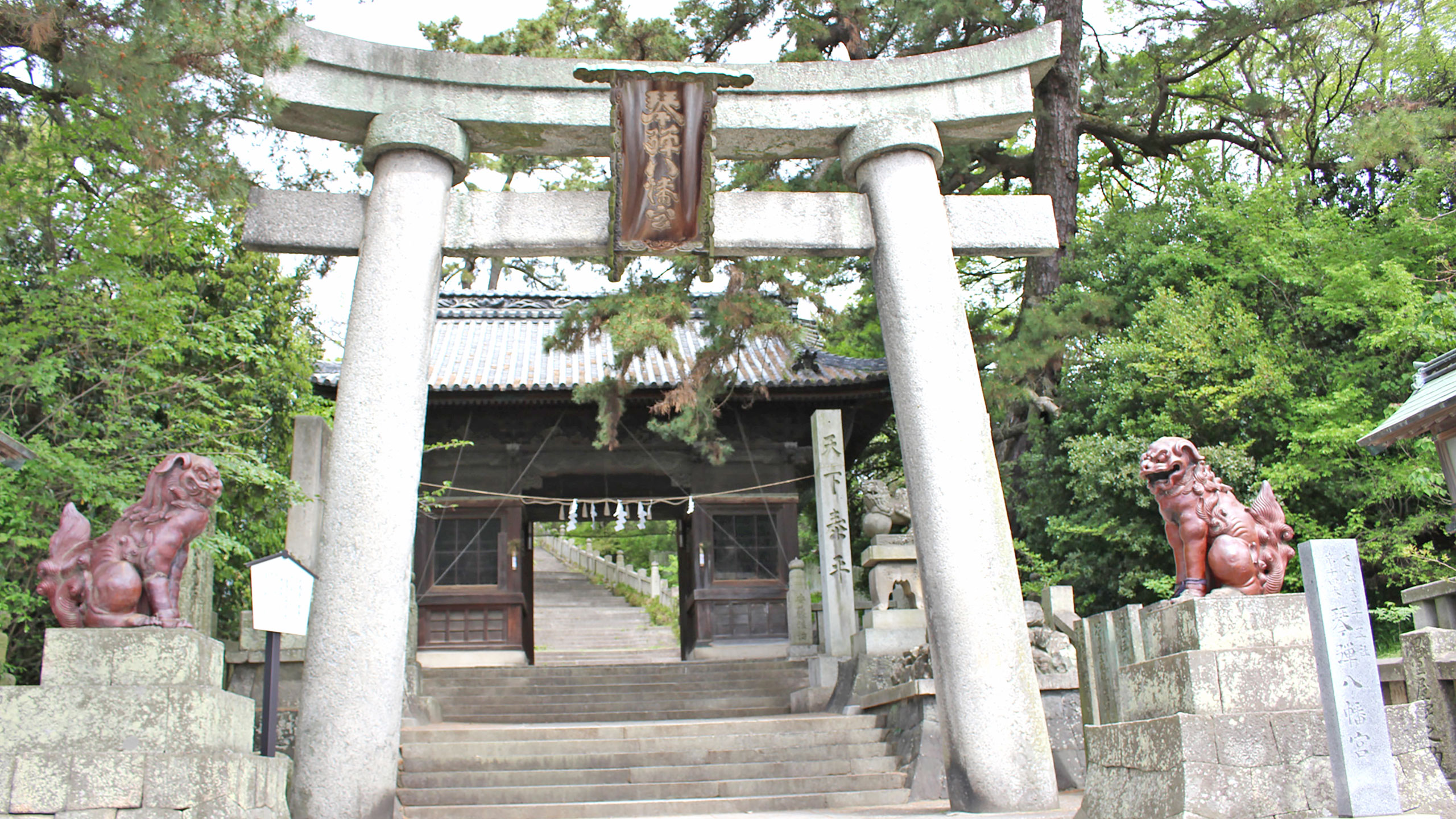
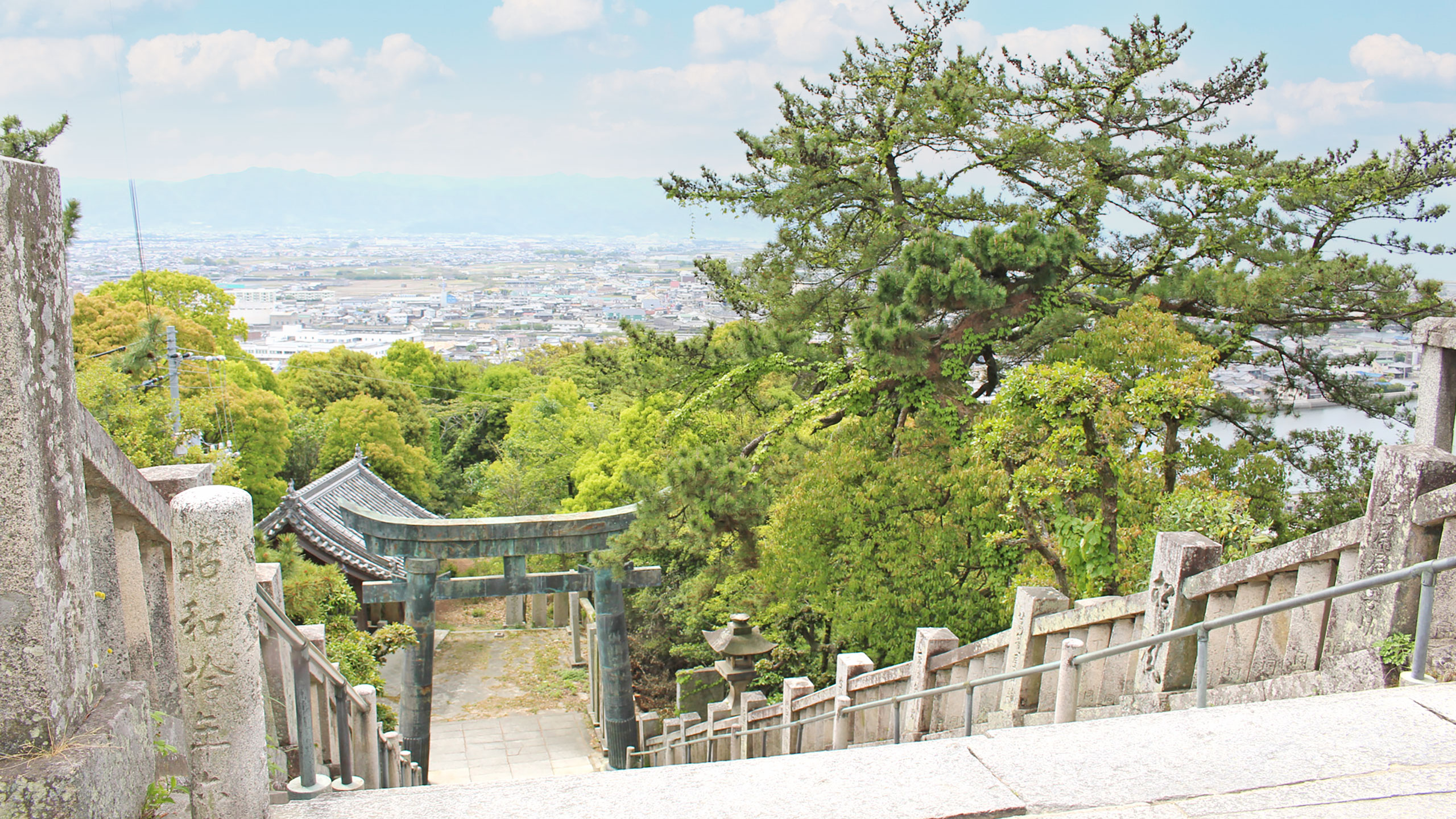
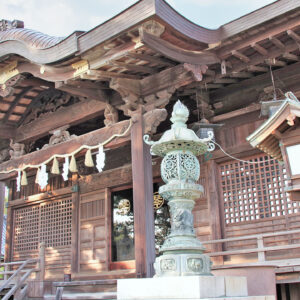
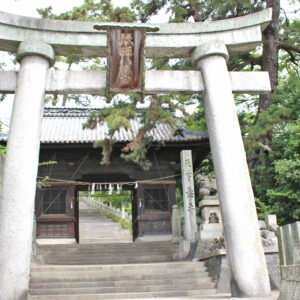

| address | 1-1 Hachiman-cho, Kanonji City, Kagawa Prefecture, 768-0061 Japan |
|---|---|
| map | |
| car | Approximately 12 minutes (6 km) by car from the Onohara IC of the Takamatsu Expressway |
| train | 5 minutes by cab from JR Kannonji Station (2 km) |
| pubric bus | There are four Pubric buses a day; take the Pubric Bus Gogo Takamuro Line from JR Kannonji Station, and tell the driver to go to Kotohiki Koen (Mori-naika). Pubric Bus has no bus stops, and you can get on and off anywhere on the route. (However, you are not allowed to get on and off the bus on Route 11 except at designated spots.) |
| parking lot | available |
| directions | There are two routes to the main shrine: one is up the stone steps from the Otorii gate and the other is by car using the one-way driveway. |
| contact us | TEL:0875-25-3828 |
- History and Origin of Kotohiki Hachimangu Shrine
- Kotohiki Hachimangu Shrine and Minamoto clan.Kotohiki Hachimangu Shrine is worshipped by the Minamoto clan. Minamoto no Yoriyoshi Before the Former Nine Years' War (a battle that took place in Mutsu Province in the late Heian Period), he sent an envoy to deliver a petition. Minamoto no Yoshiie Son of Minamoto no Yoriyoshi. He built a shrine and dedicated a sacred horse. Minamoto no Yoshitsune After the Battle of Yashima in 1185, he dedicated a shrine gate and a horse to pray for the defeat of the Taira clan. Minamoto no Yoritomo Dedicated a domain worth 10,000 kanbun (equivalent to about 100-150 million yen today).
According to one theory, in March 703, Nissho Shonin, a high priest of the Hosso sect, was practicing asceticism at Mount Kotodama. As the western sky grew darker and sounds could be heard, he went to the beach and found an old man playing the koto on a boat. The owner of the zither said, “I am Hachiman-daimyojin. I have come from Usa to protect the imperial court and country near the capital, but the scenery here is so beautiful that it is hard for me to leave.
The shonin was so surprised that he and the villagers pulled a boat and a koto up the mountain, built a shrine, and enshrined it, naming it Kotohiki Hachiman and building Hokoin Temple (now Kannon Temple, the 69th temple of the 88 sacred places on Shikoku) as the Jinguji Temple.
At that time, there was no distinction between the boundaries of shrines and temples, and the temple and shrine were a syncretism of Shintoism and Buddhism. In 807 (Daido 2), Kukai, returning from Tang Dynasty China, stopped by the temple and painted Amida Nyorai, the principle Buddha of Kotohiki Hachiman, as the principal image.
Kotohiki Hachimangu Shrine, together with Kannon-ji Temple, became one of the two sacred sites in the Shikoku pilgrimage that spread from the Kamakura period (1185-1333) to the Muromachi period (1333-1573). When the Shikoku pilgrimage was organized as 88 pilgrimage sites, Kotohiki Hachimangu Shrine became the 68th site. However, after the separation of Kotohiki Hachimangu Shrine and Kannonji Temple due to the separation of Shinto and Buddhism after the Meiji era, the statue of Amida Nyorai from Kotohiki Hachimangu Shrine was moved to the west hall of Kannonji Temple and renamed the 68th site Jinne-in Temple.
At this time, Kotohiki Hachimangu Shrine was renamed Kotohiki Hachiman Shrine, but after the war the name was changed back to the current Kotohiki Hachimangu Shrine.
Kotohiki Hachimangu Shrine is worshipped by the Minamoto clan.
Minamoto no Yoriyoshi
Before the Former Nine Years’ War (a battle that took place in Mutsu Province in the late Heian Period), he sent an envoy to deliver a petition.
Minamoto no Yoshiie
Son of Minamoto no Yoriyoshi. He built a shrine and dedicated a sacred horse.
Minamoto no Yoshitsune
After the Battle of Yashima in 1185, he dedicated a shrine gate and a horse to pray for the defeat of the Taira clan.
Minamoto no Yoritomo
Dedicated a domain worth 10,000 kanbun (equivalent to about 100-150 million yen today).

